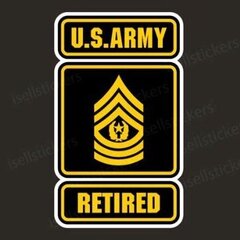tapered roller bearings
-
Similar Topics
-
By Xov
Just received delivery of a 2024 AMP Pro. Thought I'd start a thread with my impressions as I use it and learn more. There doesn't seem to be a whole lot of real-world usage information out there on this model. Hope this will help others as they research.
Intended Use Cases
Fire mitigation / slash removal from a 5 acre forested and well-gamble-oaked property. The previous owners thought as much about fire mitigation as I do about fashion: not much. Snow removal Stump pulling General hauling (rock, lumber, etc.) Weimaraner energy depletion. Wasn't an original use case, but a nice added bonus. Experiences So Far
Wasn't impressed that two of the bumpers on the underside of the bed where it sits upon the frame were missing. The metal on metal contact has damaged the powder coating and the frame. I expect a little better QC.
I've only put a few hours on it, so not a ton to report on usage. It isn't quiet; it's silent. I can't even detect an electric note from the motor. I removed (and subsequently replaced) the motor cover noticed that the motor is German and made by Schambuller. The motor controller is Italian and made by Dana TM4. Given the operating specs of both I found on the web, I suspect both are higher quality than the previous Navitas (which is supposed to be decent). The motor is rated at 25 hp and 71.5 lb-ft of torque. It feels very powerful. All the torque is delivered instantly, if desired.
The bed is huge and has an electric dump as standard. Great feature but would like it to go up a bit more. Probably not feasible from an engineering perspective, but I want and I need ;).
Power steering is nice, but vague. Probably common to many UTVs, but I am accustomed to more direct results from input. Plan early and plan often.
In our first full day of usage, we hauled about 1/2 as much slash as the entire rest of the year when I was doing it by hand cart. I may get fatter, but I'll also get more done. After a few days of usage, the battery meter has gone down by 1/10th.
Until next time...
-
By Tim n Deb
Riding out today it acted like it ran out of gas, stalled and died and would not start. Towed back to house, New plug added this past month, plenty of oil, getting plenty of gas, battery cranks good. Trys to kick in and starts but doesnt. Two days prior while sitting at a idle it died. Added gas and it started did my ranch chores with it. But just now it stalled out cranks but will not start. Tried to find if fault codes came up on the clock like manual says but not sure I am doing that right. Any and all help apprecated. Thank you
-
By didgeridoo
Hello, All! I've decided to replace the traction batteries in my 2018 Sector E1 with a 48V Lithium set. They may be expensive, but I figure the Discovery Dry Cell are, too. I am not looking for the max driving range, as I have never received near the brochured range to begin with, but a good mix of charge/ get work done/ charge is what I am expecting.
I have settled on the 48V EAGL kit from bigbattery dot com. Each battery pack provides 30Ah. The kit ships with a charger, as well. The packs would be physically connected in parallel (using a busbar) to one another, maintaining the 48V voltage, but together would be able to provide the amp draw the buggy pulls when going up hill or towing a rake (rated 320 max continuous Amps). This is in comparison to the serial connection the eight 6V lead batteries. Each of the EAGL batteries looks to have its own BMS; am I correct in thinking I will have to use their included charger rather than (simply) changing the onboard charger to lithium mode? The chemistry of the pack is LiFe PO4, for what it's worth. I haven't torn anything apart yet (to diagram), so I am not sure how the dash will interpret the AMP draw, but the kit I am looking at includes a dash mounted charge indicator.
If anyone has completed a similar conversion, do you have any tips? Specifically, how did you remove the original batteries, and how did you secure the new ones? I am guessing that almost any change from the stock batteries would involve at least some modifications. Any tips would be appreciated, especially things I may have failed to consider. Thanks!
-
By Unhappy Kioti K9 Owner
I own a K9 with 50hrs that has been in for repair more than once the farm. Multitude of issues, trying to file lemon on it but interested in knowing if owners are organizing for a class action suit. The dealer informs me there are “a lot of owners very unhappy with these”.
Thanks

-
By CSM_Retired
Greetings All,
I'm looking for the most effective way to quiet the noise inside the cab. The cab virtually sits atop the 24hp diesel engine. It's very loud and so I'm looking for ways to make inside the cab quieter.
-







Recommended Posts
Join the conversation
You can post now and register later. If you have an account, sign in now to post with your account.
Note: Your post will require moderator approval before it will be visible.